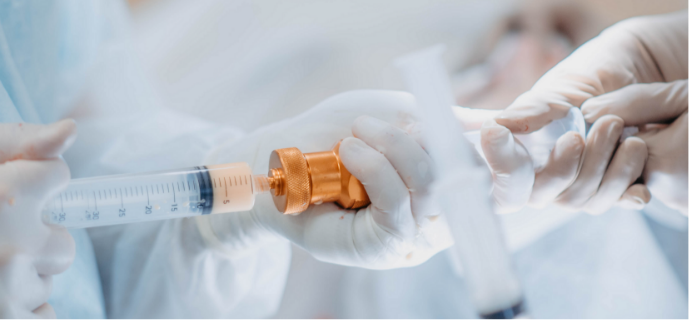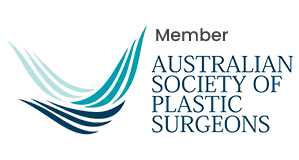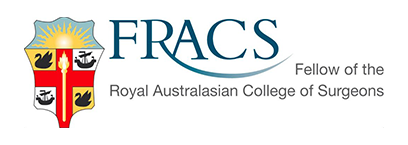Dr Nathan Stewart is a Plastic and Reconstructive Surgeon specialising in Breast Augmentation in Perth. In a breast augmentation procedure, breast implants or autologous fat tissue are placed behind the breast tissues or chest muscles to enhance the form and size of the female breast.
Breast augmentation [or breast enhancement surgery] was first done in the nineteenth century by Vincenz Czerny. Breast augmentation surgery is done to enlarge or alter the shape of the breasts. A breast augmentation or augmentation mammoplasty is one of the top five most commonly performed plastic surgery procedures globally.
Most breast augmentation surgeries employ either of two main techniques – fat grafting and/ or implants. Dr Nathan Stewart and his team in Perth will guide you in choosing which is best for you.

This involves taking fat from fat-rich body parts and using it to augment the volume or change the contour of your breasts. Dr Stewart uses liposuction to harvest fat tissue from your belly, flanks, or thighs.

Breast implants are prosthetic devices used to enhance the shape or size of a woman’s breast. The most common implants used in Australia consist of a silicone shell containing silicone gel or saline.
Implant Coating: The implants have a thick silicone-rubber shell and may have a smooth or texture surface. Breast implants are manufactured under strict quality controls to reduce the risk of rupture, gel leakage, capsule formation and other problems.
The main reason women choose to have breast augmentation is to; increase breast volume and improve contour in a woman who fees as though her breast size is too small throughout her teenage years, or it could be a choice for fullness post breast feeding. A breast augmentation will balance the shape of the breasts if they do not have symmetry.
The decision to undergo plastic surgery should only be made after a thorough discussion with your plastic surgeon. It should not be rushed, and only after you have received your financial consent, and the surgeon has discussed all risks should you decide to proceed. You must also feel comfortable and confident that the surgeon you have chosen can not only deliver your desired results, but will be accessible if you have any questions after the surgery is over. Patients can sometimes feel anxious and concerned when the nerves are settling post operatively.
Dr Stewart will require your Medical history and GP referral under the recent 2023 AHPRA Guidelines. This will help to establish communication between your GP and your surgeon, alert your surgeon to any medications and allergies, and thus best assist Dr Nathan Stewart’s team in assisting you.
It is important to inform your surgeon if you have;
It’s also good you inform essential relatives and friends to have sufficient social support during your recovery period.
Although there are several different techniques for breast augmentation, critical steps in the surgery include:
The cost of breast augmentation in Perth is $15,990.00. This is an all-inclusive package which is payable to Dr Stewart’s rooms. All parties will then invoice Dr Stewart your fees for the; Hospital, Anaesthetist and Implants.
You can appreciate the outcome of a breast augmentation procedure almost immediately after, and recovery is usually uneventful. Most of your surgical scars will disappear as the incision wounds heal. Swelling, bruising and a feeling of fullness may persist for a few weeks. You will need to support your breasts with compression bra for 6 weeks, wearing this bra 24/7.
To avoid implant infection and failure, take adequate care of the wound as recommended. While Dr Stewart may encourage early ambulation and regular exercise, do not engage in strenuous physical activities. If you develop a fever or feel something is amiss, call Dr Stewart immediately.
Although breast augmentation surgery has impressive and rapidly improved success and patient satisfaction rates, the procedure still carries some risks. Some of the possible complications of an augmentation mammaplasty include:
Cost: $15,990.00. This is an all-inclusive package which is payable to Dr Stewart’s rooms. All parties will then invoice Dr Stewart your fees for the; Hospital, Anaesthetist and Implants.
Breast augmentation is a cosmetic surgical procedure to increase the size, fullness, or shape of the breasts.
Good candidates for breast augmentation are healthy women who have realistic expectations and wish to increase the volume of their breasts.
The type of implant that is best for you will depend on your individual goals and anatomy. Options include smooth or textured implants, round or teardrop shaped. Dr Stewart will discuss with you the choices after taking into account your desired results.
Yes, a breast augmentation procedure involves making an incision, so there will be a scar. The scar is typically located in a place where it is easily concealed, usually just under the breast.
Recovery time after breast augmentation varies for each individual, but patients can usually return to normal activities within 1-2 weeks. Exercise is typically ok after 6 weeks.
There is no guarantee that you will be able to breastfeed after a breast augmentation, as the procedure can affect the milk ducts and nerves in the breast. Typically this is unaffected, and Dr Stewart can discuss with you in detail the risks involved.
The lifespan of breast implants varies, but on average, they need to be replaced every 10-15 years.
Breast augmentation surgery is typically performed with general anesthesia and patients may experience some discomfort and pain during the recovery period. Pain can be managed with prescribed medications.
Yes, breast implants can be removed if desired or if a complication arises. Dr Stewart can discuss your options with you. Breast implants should not be considered to be a lifetime device. There are no guarantees as to the lifetime of the implant . Dr Stewart can discuss a removal and replacement of implants with you versus just the removal of implants. Importantly to note is that Medicare does cover the removal of Implants (MBS 45551) whereas a removal and replacement is deemed cosmetic and therefore does not attract any rebate from medicare or your private health insurance.
You need a board-certified plastic surgeon like Dr Nathan Stewart in Perth to help reduce your chances of experiencing these dangerous complications. He is a fellow of the Royal Australasian College of Surgeons [FRACS] in Plastic and Reconstructive Surgery and is currently a Consultant Specialist Plastic Surgeon at the Royal Perth Hospital and Sir Charles Gairdner Hospital. Dr Stewart also consults in Bunbury at Saint John of God Bunbury Specialist Centre. Contact Dr Stewart and his team in Perth today to book a consultation.
Affiliations




After any kind of breast surgery, it is important you take as much time as you need to rest and recover after your breast augmentation surgery. You will be provided with a number of information sheets and checklists to prepare you for your recovery, including any symptoms to watch out for and tips to keep you as healthy and comfortable as possible during this time.
Following the procedure, you will likely experience some moderate discomfort, as well as bruising or tenderness. Dr Stewart will discuss your pain medication needs with you and tailor a dosage and schedule to suit your individual circumstances. Most symptoms will settle within 4 – 6 weeks.
Should you have any questions at any time, please don’t hesitate to contact Dr Stewart or the team.!